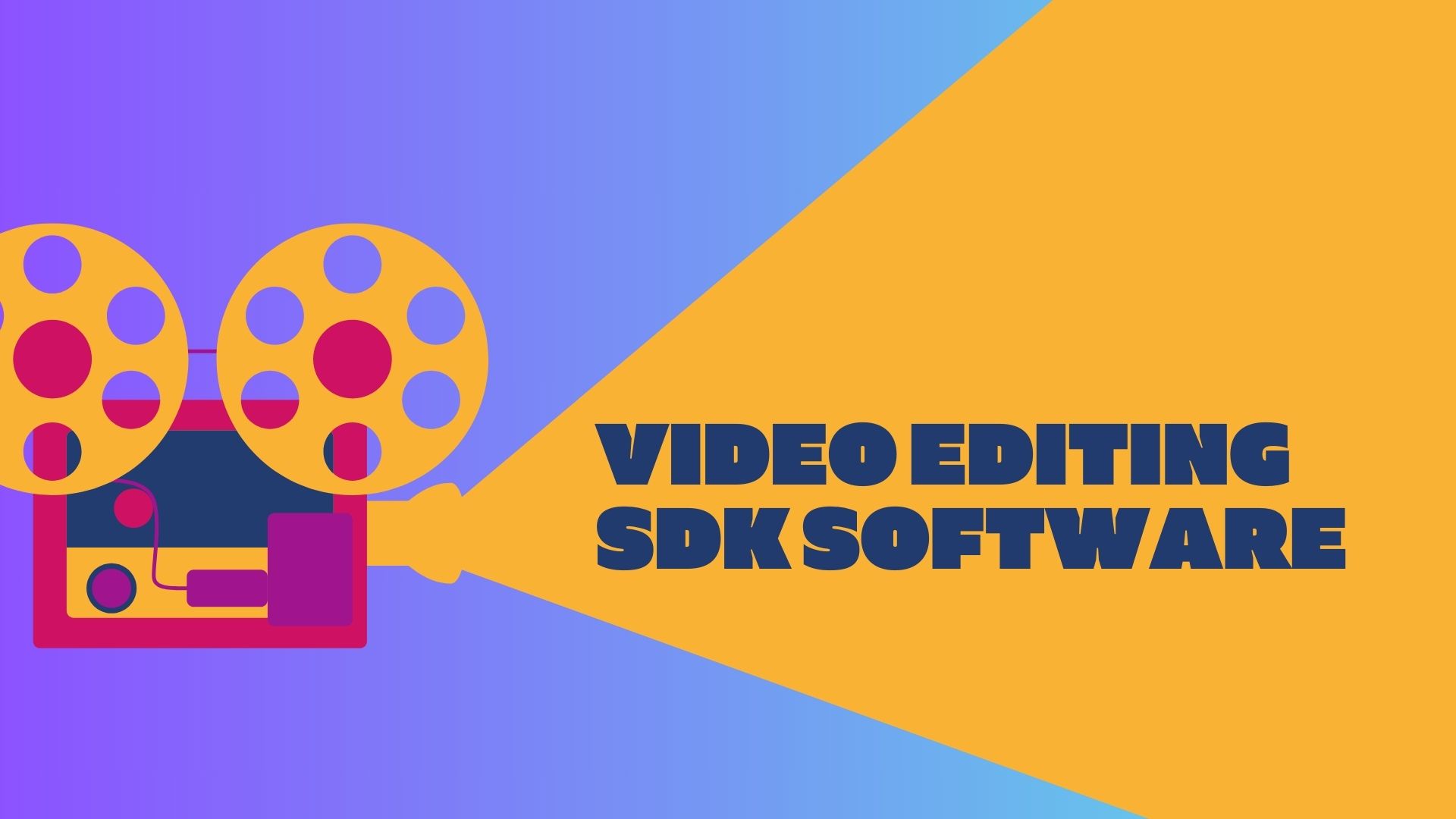Unveiling the Best Video Editing SDK Software: A Comprehensive Guide

Page Contents
Video editing has become an integral part of various applications and platforms, from mobile apps to web services. To enhance the capabilities of developers and empower them to deliver seamless video editing experiences, Video Editing Software Development Kits (SDKs) play a crucial role. In this article, we will delve into the realm of video editing SDKs and AI video editing API, exploring the best options available that cater to the diverse needs of developers.
Understanding Video Editing SDKs:
Video Editing SDKs are sets of tools, libraries, and APIs that developers can integrate into their applications to enable video editing functionalities. These SDKs provide a range of features, including video trimming, cutting, merging, adding effects, transitions, and more. The goal is to simplify the process of incorporating advanced video editing capabilities into applications without building everything from scratch.
Top Video Editing SDK Software:
1. Banuba Video Editing SDK:
-
Key Features:
- Advanced facial recognition and tracking for AR effects.
- Real-time video editing with interactive filters and overlays.
- Integration with Banuba's extensive library of AR effects and animations.
-
Overview:
- Banuba Video Editing SDK stands out with its emphasis on augmented reality (AR) effects and facial recognition capabilities. Developers can leverage advanced facial tracking to apply interactive filters and overlays in real-time, enhancing the overall video editing experience. The SDK integrates seamlessly with Banuba's extensive library of AR effects, providing a diverse range of creative options for developers to incorporate into their applications.
2. FFmpeg:
-
Key Features:
- Comprehensive multimedia processing capabilities.
- Support for a wide range of audio and video codecs.
- Video filtering and manipulation tools.
-
Overview:
- FFmpeg is a powerful open-source software suite that facilitates video editing and processing. While it's more of a multimedia framework than a conventional SDK, its extensive capabilities make it a popular choice for developers seeking flexibility and customization in their video editing applications. FFmpeg supports various platforms, including Windows, macOS, and Linux.
3. KineMaster SDK:
-
Key Features:
- Real-time video editing capabilities.
- Multi-layer video editing support.
- Transition effects and audio editing tools.
-
Overview:
- KineMaster SDK is the SDK version of the popular KineMaster video editing app. It provides developers with the tools to integrate KineMaster's advanced video editing features into their own applications. The SDK supports real-time video editing, allowing for a seamless editing experience. It is compatible with both iOS and Android platforms.
4. Adobe Premiere Pro API:
-
Key Features:
- Access to Adobe Premiere Pro's editing capabilities.
- Integration with Creative Cloud services.
- Robust video editing tools and workflows.
-
Overview:
- Adobe Premiere Pro API allows developers to leverage the editing power of Adobe's professional-grade video editing software. With access to Premiere Pro's capabilities, developers can build applications that integrate seamlessly with Adobe's ecosystem. This API is suitable for projects where high-end video editing features are essential.
5. AVFoundation (iOS) / MediaCodec (Android):
-
Key Features:
- Native multimedia frameworks for iOS (AVFoundation) and Android (MediaCodec).
- Low-level access to audio and video processing.
- Integration with platform-specific features.
-
Overview:
- For iOS development, AVFoundation provides a robust framework for handling multimedia, including video editing. Similarly, on the Android platform, developers can utilize the MediaCodec API for low-level access to multimedia processing. While these are not standalone SDKs, they are crucial for developers building platform-specific video editing applications.
6. Vidispine API:
-
Key Features:
- Cloud-based video content management and editing.
- RESTful API for seamless integration.
- Scalable and customizable video workflows.
-
Overview:
- Vidispine offers a cloud-based video content management system with powerful video editing capabilities through its API. Developers can integrate Vidispine into their applications, providing users with scalable and customizable video workflows. The API is suitable for projects that require cloud-based video editing solutions.
7. Muvee SDK:
-
Key Features:
- Automatic video editing and production.
- Real-time video analysis for automatic editing decisions.
- Integration with third-party applications.
-
Overview:
- Muvee SDK focuses on automatic video editing and production. It uses real-time video analysis to make automatic editing decisions, simplifying the video creation process. Developers can integrate Muvee SDK into their applications, allowing users to generate polished videos effortlessly.
8. VEED SDK:
-
Key Features:
- Online video editing capabilities.
- Integration with VEED's video editing tools.
- Support for various media formats.
-
Overview:
- VEED SDK is designed for online video editing, offering developers the ability to integrate VEED's editing tools into their platforms. It supports various media formats and is suitable for projects that require web-based video editing capabilities.
Criteria for Choosing a Video Editing SDK:
1. Ease of Integration:
- The SDK should offer easy integration into the existing development environment. A well-documented SDK with clear API documentation simplifies the integration process.
2. Feature Set:
- Consider the specific video editing features provided by the SDK. It should align with the requirements of your application or project, whether it's basic editing functionalities or advanced features like multi-layer editing and special effects.
3. Platform Compatibility:
- Ensure that the SDK is compatible with the platforms you are targeting, whether it's iOS, Android, or cross-platform development. Compatibility with different operating systems and devices is crucial.
4. Performance:
- Assess the performance of the SDK, especially when handling large video files or complex editing tasks. Smooth real-time editing capabilities contribute to a positive user experience.
5. Community and Support:
- A vibrant developer community and good support from the SDK provider are valuable assets. Community forums, documentation, and responsive support can be instrumental in overcoming challenges during development.
6. Licensing and Pricing:
- Understand the licensing model and pricing structure of the SDK. Some SDKs may offer free versions with limited features, while others may operate on a subscription or licensing basis. Choose a model that aligns with your project's budget and requirements.
7. Scalability:
- Consider the scalability of the SDK, especially if your application is expected to handle a growing user base. A scalable SDK ensures that your video editing features can accommodate increasing demands.
Conclusion:
Choosing the right video editing SDK is a crucial decision for developers looking to incorporate advanced video editing capabilities into their applications. Each SDK comes with its unique features, strengths, and target use cases. Whether you prioritize real-time editing, cloud-based workflows, or seamless integration with professional-grade software, there's an SDK that fits your needs. By carefully evaluating the criteria mentioned and understanding the specific requirements of your project, you can make an informed decision that paves the way for a compelling and feature-rich video editing experience for your users.

Public relations, digital marketing, journalism, copywriting. I have done it all so I am able to communicate any information in a professional manner. Recent work includes creating compelling digital content, and applying SEO strategies to increase website performance. I am a skilled copy editor who can manage budgets and people.



